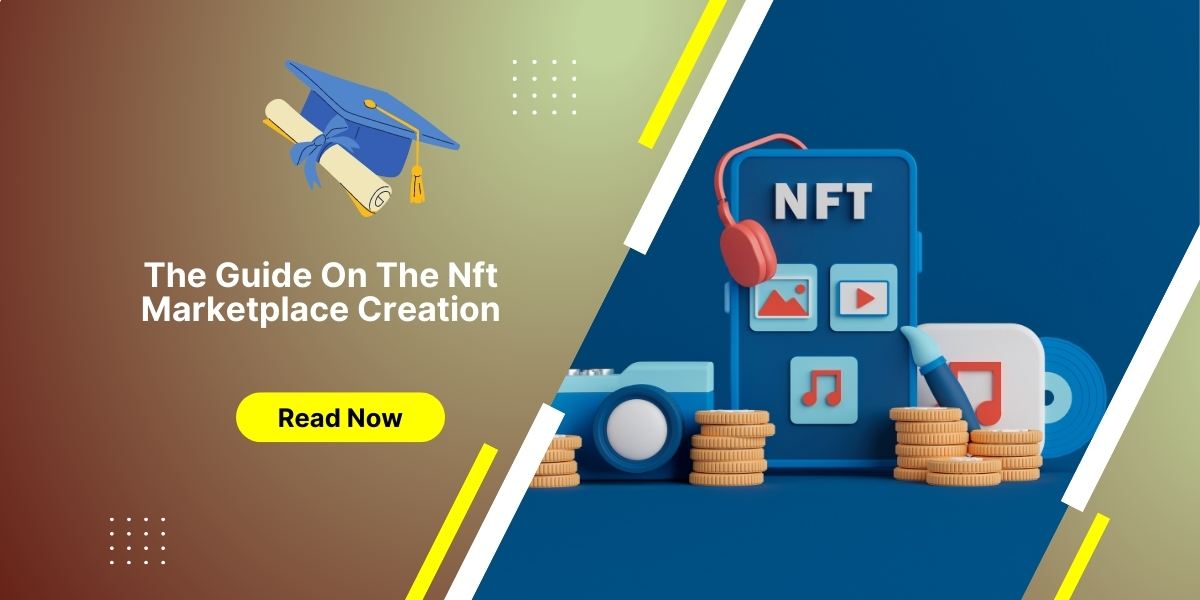Web 3. 0 is a global trend of digitalization, the main characteristic of which is decentralization. This fact leads to the demand for non-fungible tokens (NFTs) with their blockchain base. Besides, the capitalization of the NFT market equals 138%, which is a striving success.
The high need for the platform allowing to trade of NFTs has resulted in the creation of a special market to perform this goal. This market is gaining momentum in its development and is becoming more and more popular. This provides a great opportunity to create a new value stream within token trading by designing your own NFT-marketplace.
Reading this post, you will become familiar with the basic steps to create your own solid NFT marketplace, the core functionality, as well as a lot of other valuable information related to this topic.
NFT Marketplace: Concept and Key Principles
NFT token technology has been afloat since 2017. It is a new type of cryptocurrency asset that carries unique information. NFT token (Non-Fungible Token) is a special type of digital asset.
NFT tokens cannot be equivalently replaced. NFTs can be used as investment assets because their value can also grow and reach very high values. It is impossible to give away one token or group and get the same one. If you have a token that includes the original image, it cannot be exchanged for a similar one. All data stored in them is unique. Moreover, NFTs are already leveraged to prove ownership or a share in an object, thanks to a digital signature verifying ownership. All digital objects that are unique and of value can be tokenized. At the same time, each NFT is irreplaceable and has an individual price.
To earn money, you can launch your own marketplace and generate profit from the fee on the NFT you place for sale. Also, special platforms for creating and selling tokens may charge commissions for smart contracts that allow the blockchain to store data securely or for initializing a digital wallet in which the assets will be stored.
NFT Marketplace Integral Features to Implement
The following list includes the necessary features that are worth implementing in the NFT marketplace:
- Token listing. The token showcase is vital since it allows enthusiasts to explore information about the item (details,property, rates, price, method of purchase, reviews, etc.).
- Search bar and filter system. A convenient search engine will help users find the item they want quickly and easily.
- Filters. All NTFs should be categorized, to illustrate, art, photo, video, memes, music, and many other industries. This way, it is much simpler for users to use the site’s functionality. Accordingly, an integrated filter system simplifies navigation and enables customers to group tokens by payment method, niche, and a host of other characteristics.
- Signing up /in. To extradite and place NFTs, creators must first go through a registration/authorization process on the marketplace.
- Integrating external wallets. To allow the audience to keep tokens and conduct operations, the platform must be integrated with e-wallets. The most straightforward way is to ensure connectivity with booming cryptocurrency wallets. Such an option will be highly convenient for users who already leverage it.
- Announcements. The need for this feature is to allow users to upload a file quickly, post information about a token, specify its properties, tags, external links, etc.
- Bets. The main purpose of this feature is to place bids and provide tracking of their current status.
- Bidding history. This section is a tool to explore the most on-demand objects of the platform, research its products, NFT, as well as the price and date it was bought.
- Feedback and reviews. This part of the NFT marketplace helps users explore the feedback to lots, creators, and purchasers.
- Notifications. You should implement a handy tooltip for keeping users up to date about upcoming bets, changes in NFT status, asset trades, site upgrades, etc.
- Support center. This part of the functionality improves customer service by allowing you to optimize the process of solving problems and customers will be able to get solutions to their requests in the shortest possible time. Thus, you can create a support center, design a chatbot, or build a form to send a letter to email. Yet, it will increase the cost to build NFT marketplace.
The Roadmap to Create NFT Marketplace
Without the right strategy, the process of implementing an NFT marketplace is many times more complicated. The roadmap will vary from case to case. However, the basic steps remain almost the same in comparison with how to build a DEX:
- Market examination. Prior to designing your marketplace, you should research the market, explore competitors’ platforms, evaluate their potency, as well as detect drawbacks, to apply this to your benefit.
- Roadmap creation. During this phase, you should establish objectives and comprehend which domain you are striving to span as well as the target audience you would like to engage, due to which model you will trade tokens, what functionality your platform will deliver, and how you will emphasize within the market rivals.
- UX/UI design creation. The way your audience will interact with the platform is concluded in the interface, so it is a significant part of forming the satisfaction from the marketplace. In addition, u refers not only to the elements’ placement, but also to the intuitiveness and convenience. It is crucial to develop a clear and laconic design. This will help stand out from the competition and engage and retain your users to leverage the solution.
- Product implementation. The team of software engineers architect the features according to the primarily set requirements.
- Quality Assurance. The QA team conducts a range of tests that help verify the operation and performance of the product as well as detect potential failures. In case any issues are detected, they are successfully liquidated prioto the deployment, utility is significantly enhanced.
- Support and further maintenance. The product maintenance ensures a prolonged software life as well as the higher level of competitiveness, which will allow you to get rid of bugs efficiently, handle operational challenges radiply, implement modifications complying with the dynamic market tendencies, etc.
Top Booming NFT Marketplaces
At the moment, the modern marketplace can offer several hundred of a great diversity of NFT marketplaces. Each includes its own features and benefits, as well as a unique concept. While there is a huge variety of NFT marketplaces, not every one of them becomes profitable. Because of this fact, it is worth examining not only the giants of the NFT marketplace but also those startups that have not found success. This will help highlight their bottlenecks, drawbacks, and issues and avoid similar nuances when implementing your own project.
However, below we have offered a list of NFT marketplaces that have become in-demand and profitable, as well as continuing to develop in this niche:
Binance NFT
This platform includes tokens of all types. Placement for creators is free due to the lack of moderation. Transactions take place for the cryptocurrency Ethereum, Binance Coin, and Binance USD.
OpenSea
The largest marketplace for trading NFT assets. Every day, tokens are sold and bought here for a total of $40 million. Transactions can be made without additional confirmation. Various tokens are available – collectible cards, game characters, and works of art, both rare and in collections.
Alibaba NFT
This platform specializes in selling copyrights on art, music, software, games, patents, etc.
Summarize
Creating an NFT marketplace is not an easy process, with a number of inherent peculiarities of this industry. Thus, to develop a quality product, it is worth contacting a competent IT vendor who will analyze your requirements and implement a high-quality NFT trading platform.




